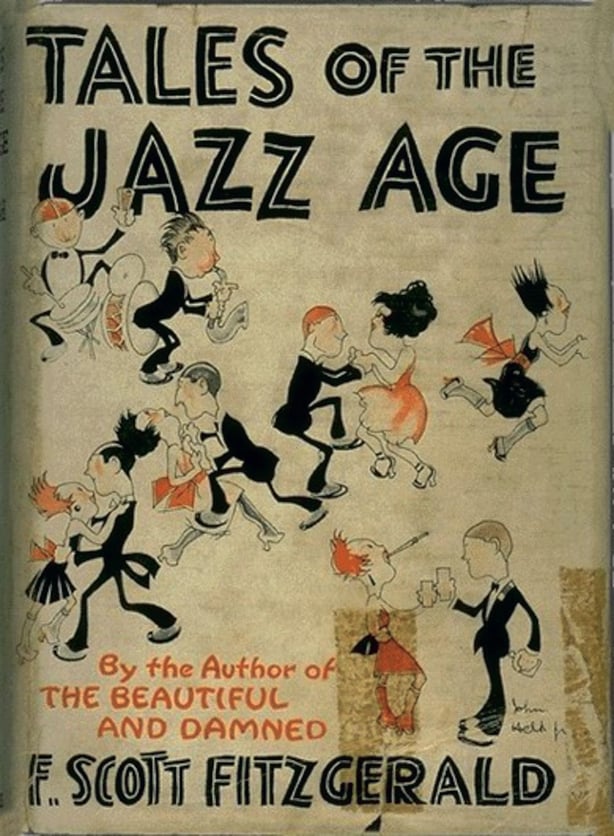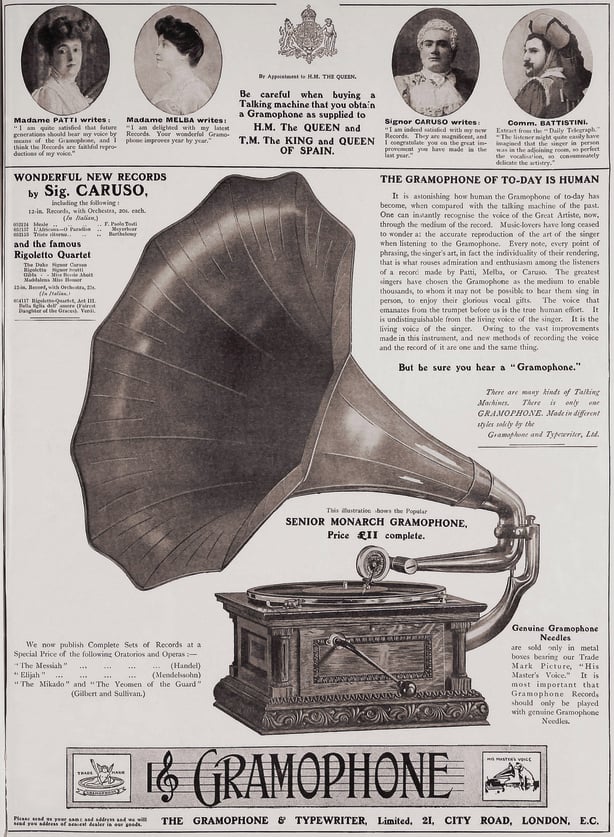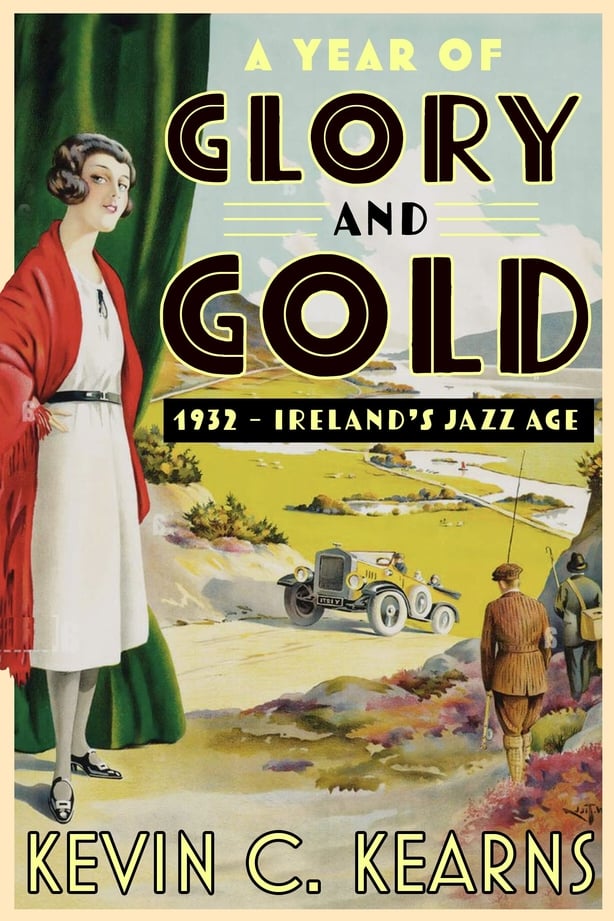We present an extract from A Year of Glory and Gold: 1932, Ireland's Jazz Age, the new book from bestselling social historian Kevin C. Kearns.
The 1930s in Ireland is often remembered as a bleak period of economic stagnation and unemployment. But, 1932, hailed by the Irish Press as a 'new era', was an early glimmer of the modernity that Ireland would later reach, with key events including Olympic gold medals and the rise of Jack Doyle, the Eucharistic Congress, a so-called gold rush and the election of Éamon de Valera, all hinting at Ireland’s future success.
The soundtrack scoring all this change was the jazz craze, loosening the conservative moral order of the time. Bringing new forms of dress, lifestyle and behaviour, it excited a younger generation for the future, while leaving an older generation wary of such rapid change.
Modernity and the Jazz Craze
In Ireland, the Jazz Age coincided with the first decade of the Free State and remained ebullient into the mid-1930s, disseminating its intoxicating music, dancing and lifestyle through the growing popularity of the gramophone, wireless and cinematograph. Returning emigrants from America also brought jazz records, music sheets and fanciful notions of a free-spirited, rebellious style of behaviour quite different from that of older generations.
For Ireland's younger generations, jazz became all the rage. Jazz music and dancing were an irresistible thrill, a wild expression of self, titillating to the senses and taking them to what was called the 'terrain of fantasy’. The music was liberating and uninhibited, as described by the Sunday Independent: ‘Music is a powerful force in arousing the emotions … the zeal for happiness … as people go rapturously foolish about jazz.’
There was a generational gap in attitudes towards the jazz craze. Older folk variously dismissed it, tolerated it or found it benign and ‘bouncy’. But a good many critics voiced disapproval, if not condemnation. Some moralists and religious figures ranted that it was the ‘devil’s music’ and that it encouraged paganism. Fr Peter Conefrey, one of its most virulent critics, reviled it in fiery speeches as ‘primitive … the language of savages in Africa’. However, most older Irish people did not endorse such extreme condemnation.

(Image: History and Art Collection/Alamy Stock Photo)
As the jazz craze became entrenched during the early 1930s, a distinction was made by many Irish people between jazz music and jazz dancing. While the music may have been accepted, the proliferation of unlicensed all-night jazz dancehalls became a serious legal and moral issue. To the explosive tunes of a jazz band or blaring gramophone record, people feverishly danced the ‘black bottom’, ‘shimmy’, ‘Charleston’, ‘shag’ and ‘jitterbug’ rhythms that made their bodies jerk, convulse and lunge in uninhibited movements never before seen on an Irish dance floor. Oldsters were aghast at such indecent dancing.
Jazz dance devotees had a difficult time trying to explain to the uninitiated why it was so irresistible, sweeping them away in emotion. As a contributor to the Irish Radio Review put it:
My feet begin to tap the floor if I hear a jazz band …a natural instinct for me to move my body in all sorts of ridiculous ways … jazz can wake other animal instincts in me … to go into ecstasy … to be carried away.
This was precisely what Ireland’s religious and moral guardians feared. Newspapers carried volumes of letters from readers putting the subject into their words – from ‘inspired’ to ‘insane’. While many people followed the jazz saga with a passing interest, to others it became a serious matter, as expressed by one writer to the Irish Independent:
It is to be feared, with the advent of our new freedom, that our morals are not improving, with a continuous round of Saturday and Sunday night jazz dancing – and other forms of imported amusements.
GAA authorities took a tough stand against jazz dancing amongst their members, with some imposing a strict ban on any such dancing at their functions. At the annual convention, one GAA secretary argued: ‘A man who plays Gaelic football and goes to jazz dances – "foreign" dances – is the hallmark of shoneenism!’ The secretary favoured a complete ban on jazz dancing for all GAA members – who, being young and athletic, loved jazz in all forms.

The Graphic, a weekly illustrated newspaper, published in London from 1869 to 1932
(Classic Image/Alamy Stock Photo)
It is not known what the campaigning politicians thought of the flamboyant flappers, the most exhilarating icons of Ireland’s modern jazz culture. It is probably safe to assume that Cosgrave and his conservative cohorts did not exactly enjoy watching the black bottom or shimmy being performed at full pitch before their eyes.
There are several claimed origins of the term ‘flapper’, one of the most graphic being that of a chick desperately flapping her wings trying to fly, having not yet grown adult feathers. According to the Oxford English Dictionary, it also describes a ‘young woman, esp. with an implication of flightiness or lack of decorum.’ As Eric Burns extrapolates:
There was no more obvious, or popular, means for a flapper to lose her decorum publicly than to do the Charleston. Or the Black Bottom which involved hopping forward and backward and slapping the rump.
Hollywood and American newspapers and magazines glamourised and glorified the Jazz Age and its flappers, resulting in their ‘behaviour and dress being imitated by millions around the world’, including the Irish. Flappers were the chic, risqué libertines of their age, brazenly flouting conventional, conservative social forms and morals while flaunting their counter-cultural behaviour and disdain for the old restrictions on Irish women. They sought to be exciting, reckless, pleasure-seeking and outlandish before the eyes of proper society, tossing away their corsets and pantaloons, raising their skirts, drinking, driving, seeking thrills – even talking about sex! They relished their daring image: a young thing with daringly short hair, daringly short skirts, and daringly bold and unladylike habits. Heavy on the lipstick and rouge, light on the self-restraint and traditional manners.
They were also daringly bold when it came to seeking dangerous events and taking risks. The Irish press noted how the flappers were commonly seen at traditionally male sporting events – boxing, wrestling, dangerous high-speed motor car races in the Phoenix Park – cheering as robustly as the men, even seeking to stand at the most dangerous curves on the course, as the Saturday Herald described:
At one corner, scene of thrilling spills and skids, a huge crowd of women collected. Most of them were flappers who seemed to take extraordinary interest, animatedly keyed up to a high pitch of expectancy when the race started.
Flappers could knowledgeably talk about the types of race cars and their engines and special features, as well their handsome, daring drivers.
But it was on the dance floor that the bold, brazen flappers displayed shocking behaviour before the eyes of respectable society (often aided by a good few sups of smuggled poteen). Here, one flapper’s inhibitions were tossed to the wind:
Fuelled by bootleg alcohol, she whirled herself around the dance floor, frantic and loose-limbed and uninhibited in her contortions, exerting herself with a hint of sexual frenzy that many an anxious elder found alarming – and doing so into the night.
Flappers were a paramount ‘presence, a symbol of the era’. Though a minority of the female population, their ‘eye-popping modernity and the jazz craze aberrations’ created a joyful excitement, excess and enthusiasm within society. Indisputably enlivening the Irish social scene, they gave journalists, clergy, socialites, gossipers, pub men and women tea club members a fascinating subject to discuss. It was a fresh topic of news and conversation, fitting Ireland’s modern age.

A Year of Glory and Gold: 1932, Ireland's Jazz Age is published by Gill

